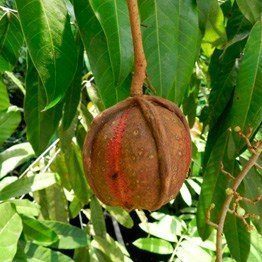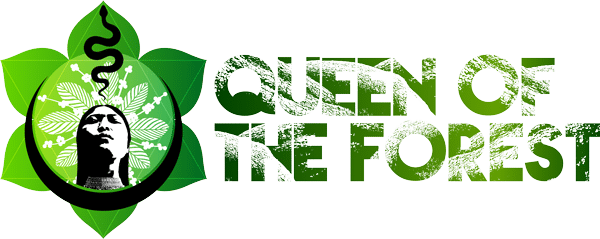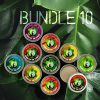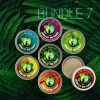 the industry in creams, shampoos, ointments and soaps. The natives also use the oil in a mixture with annatto dye and pass on the body to repel insects and protect themselves from the sun. Some candle industries also use the product in manufacturing as it is believed that the smell of burnt candle also repels insects.
the industry in creams, shampoos, ointments and soaps. The natives also use the oil in a mixture with annatto dye and pass on the body to repel insects and protect themselves from the sun. Some candle industries also use the product in manufacturing as it is believed that the smell of burnt candle also repels insects.
A single tree can produce up to 200 kilos of almonds in a year, generating about seven liters of oil. The plant occurs throughout the Amazon region.

The Andiroba tree occurs throughout the Amazon, in the meadows of floodplains or wetlands of rivers, sometimes forming small agglomerations. It also exists in the Antilles, Nicaragua, Peru, Suriname, Guianas, Tropical Africa, Colombia and Venezuela.
* SCIENTIFIC NAME: Carapa guianensis Aubl.
* FAMILY: Meliaceae
* COMMERCIAL NAMES: Andiroba, carapa, andirova, cedar-male, fiqueroa, tangaré, andiroba-branca, a. Of the igapó, a. Red, angirova, comaçari, mandiroba, yandiroba, carapá, carapinha, gendiroba, jandiroba, penaiba, purga of Santo lnácio, abomidan, caraba.
* ORIGIN: Occurs throughout the Amazon, in the forests of floodplains or wetlands of rivers, sometimes forming small agglomerations. It also exists in the Antilles, Nicaragua, Peru, Suriname, Guianas, Tropical Africa, Colombia and Venezuela.
* HABITAT: Throughout the Amazon, in floodplain forests and in swamps along rivers and streams.
* TREE: Large tree with rapid growth, reaching up to 30 m in height, gray bark, bitter and coarse.Espécie of great value for the abundance and oleaginous content of its seeds and wide use of its wood. Composite leaves, with Petioles long, alternating, 30-60 cm long and up to 50 cm wide.Flores small, yellow and red, axillary.Fruits, globular dehiscent capsules, 6-8 cm in diameter, inside it is 8- 16 seeds, with coriaceous peel, furruginea and white, tender, bitter pulp with 70% of a dark yellow oil, excellent for saboaria and illumination, still used in Indian medicine associated with “urucu” with preventive pricks Of insects and penetration of the “footworm”.
* GENERAL CHARACTERISTICS: Dark brown or reddish-brown, distinct from pale or grayish sapwood. Direct grain tending to be reeled, medium texture, moderate luster and imperceptible odor. Considered substitution of mahogany (swietenia macrophylla) and cedar Spp.).
* DRYING: Very fast in greenhouse with moderate cracking, gravelling and twisting, in the drying program 1.The combination of air drying and oven drying gives satisfactory results, especially when using lower temperatures and high humidity during the initial stage of Drying in an oven.
* Uses: Construction (beams, rafters, slats, door frames, wainscoting, blinds, shutters, frames, baseboards, trimming, frames), furniture, blades, plywood, packing boxes, interior finishes of boats and ships and others.
* MEDICINAL USE: The bark as the leaves, once cooked are used as febrifuge and anthelmintic or for washing the ulcers, against impetigo and other diseases.[/vc_column_text][/vc_column][/vc_row][vc_row][vc_column][templatera id=”10441″][templatera id=”10233″][/vc_column][/vc_row]






 Join the Tribe
Join the Tribe